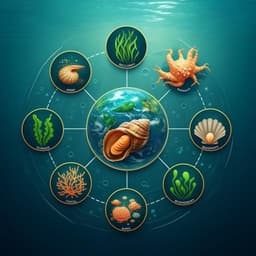
Biology
Climate Change Drives a Widespread Increase in Arctic and Subarctic Marine Fish Biodiversity
A. Belgrano, C. Guillem-jorda, et al.
This groundbreaking research conducted by Andrea Belgrano, Cesc Guillem-Jorda, Ove Djupevåg, and others reveals significant changes in marine biodiversity in the Arctic, linking increasing sea temperatures to a remarkable rise in demersal fish species. Discover how climate change is transforming marine ecosystems from the North Sea to the Arctic Ocean!
Playback language: English
Related Publications
Explore these studies to deepen your understanding of the subject.







